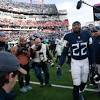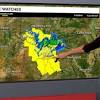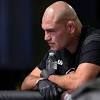Talking to Kevin Costner about 'Horizon': He's bet everything, will it ...

Kevin Costner was 23 in 1978, when he filmed his first feature, “Sizzle Beach, U.S.A.,” also known as “Malibu Hot Summer.” That’s one fact.
Another one: Kevin Costner looks right in a cowboy hat. There’s more to movie stardom than that, but with Costner, the hat may have had something to do with the stardom, which came a few years after “Sizzle Beach/Malibu,” which came from Troma, the trash-forward, money-optional film production company behind “Class of Nuke ’em High” and “Surf Nazis Must Die.”
Released in 1981, Costner’s debut feature follows three Los Angeles women, yearning for love, careers and meaning. The fifth-billed Costner plays the sole decent male in Southern California, a wealthy young stable owner sporting a cowboy hat. The hat has the added benefit of hiding the actor’s modified bowl haircut, which has not stood the test of time. But the actor has.
Ever since breaking through as the charismatic live wire Jake in his first real Western, director Lawrence Kasdan’s “Silverado” (1985), Costner has served as a genre ambassador and an advocate of the storytelling form. Now 69, he recently spent four increasingly contentious seasons on “Yellowstone,” settling scores and clearing the horizon of varmints anywhere near the Dutton ranch. Now, as producer, co-writer, director and marquee attraction, Costner’s the largely self-financed force behind a four-film gamble known as “Horizon: An American Saga,” set in the Civil War era.
Part One opens in theaters June 28. Costner and company return to theaters for the already filmed Part Two on Aug. 16. However these fare, he’s making two more. He has been filming Part Three for a while now. Like Costner’s own “Dances with Wolves” (1990), which won him Oscars for best director (first time out) and best picture, the script by Costner and Jon Baird devotes some acreage to First Nation characters and actors, though concentrating in the main on various groups of white men and women moving West.
Like the 1962 film that changed his young life, “Horizon” believes in an old-fashioned vision of the American pioneer spirit, without a lot of moral complication. Costner plays a loner and gunslinger, Hayes Ellison, who in Part One of “Horizon” takes on the role of protector of sex worker Marigold (Abbey Lee) and the newborn in her care. The filmmaker says he mortgaged his place in Santa Barbara to help finance the first two “Horizon” movies and their $100 million budget.
Early box office tracking data for “Horizon” hasn’t been great; same with the reviews coming out the film’s world premiere at the Cannes Film Festival last month. Costner and distributor Warner Bros. Pictures figure the project’s best hopes lie with audiences outside New York and Los Angeles. The pre-release push involved Costner’s promotional blitz with stops in Atlanta, Philadelphia and Dallas. For the Chicago regional junket, the studio flew in and put up TV, radio and some print and online journalists from Cleveland, Kansas City, St. Louis, Milwaukee, Minneapolis and Detroit.
“I’ve got so much at risk on this,” he told me during our interview at the Western-themed Frontier restaurant on North Milwaukee Avenue.
The interview has been edited for clarity and length.
Q: You were filming Part Three of “Horizon” just last week?
A: Two days ago, in fact. We called wrap on Saturday for a while, and we’ll come back to it in August. We were filming down in this incredible box canyon, the kind of landscape I love to set drama against. In Utah, out of St. George, about two hours north of Las Vegas. I’ll finish Part Three by the beginning of October. And then I’ll figure out how to make the fourth one.
Q: First time I saw you in a movie was “Silverado,” in 1985. I remember the audience really responding to what you were bringing to it, just the glee and the —
A: The juice! It was a flashy role, so it was good for me. I didn’t really know how to play it at first. I knew I’d make Westerns someday; somehow, in my own psyche, I just knew it. I figured I knew how to play the laconic Scott Glenn role, or one of those other roles. But this one, this kid was literally swinging on the bars (in a jail cell), just full of juice. At first I thought, god, I didn’t know how to do this. But I figured it out. I loved being in that movie.
I think Larry (Kasdan, the director, who cast Costner in “The Big Chill” but cut his part out of the final version) was a big foundation for me. The rehearsals he did, the room he afforded his actors, and how gracious he was with them. He’s such a skilled writer. Between him and (writer-director) Ron Shelton (“Bull Durham,” “Tin Cup”), there was a lot to appreciate just being around them. Quality people. Decent men, who happened to be great storytellers.

Q: And it was just three years after “Silverado” that you started thinking about what became “Horizon”?
A: Right, 1988. I actually commissioned the story through his brother, Mark Kasdan. He wrote the first version, called “Sidewinder.” And I liked it. And I couldn’t get anyone to make it. But (years later) I was working on it with a friend of mine, Jon Baird, who said he wanted to just keep writing. And he wrote four more.
There was something wrong about the first one. Not wrong, maybe, but originally the town of Horizon was already there at the start. I started to think about that, and the idea that all these towns in America started with somebody putting a stake in an ant hill and saying “This is mine.” On the frontier there was a lot at stake when somebody said that. So I thought: What if we explored how these towns came to be?
There’s been a lot of scripts I’ve liked that (took years to sell). I walked the street with Ron Shelton trying to sell “Bull Durham.” “Field of Dreams” was a really difficult movie to sell.
I’m about as mainstream as you can get. But I do believe in the nuances of subplot, and I try to invest in character. With “Horizon” what came to dominate, really, was the women in it. The more we wrote, the more central they became. But it doesn’t keep me from the action, or eliminate the gunfights.

Q: Let’s talk about “How the West Was Won” (1962), which is a big influence here.
A: That was the first time I fell in love with the West at the movies, starting with that opening image, and Spencer Tracy’s voice, and James Stewart dressed in skins. Not the Jimmy Stewart we knew. I remember that birch bark canoe with the tar. I was seven, and I was transported.
Q: Did you see it in Cinerama?
A: Yeah, at the Dome! (To note: The Hollywood Cinerama Dome theater is scheduled, after renovations, to reopen in 2025.) I was seven or eight. At the time my feet were dangling about this far off the chair (demonstrates, smiling). I didn’t leave for the intermission; I didn’t want anybody to take my seat. I was there for a little boy’s birthday party, but I was by myself. The other kids were fartin’ around, running around. I don’t think I left my seat.
Q: Your family moved a lot when you were that age, is that right?
A: My dad worked for Consolidated Edison. His family had lost everything in the Oklahoma Dust Bowl, just like “The Grapes of Wrath,” and they had to come to California. He had one job and never looked for any other opportunity because he was afraid that job might be taken from him.
We moved quite a bit, when I was in ninth, 10th, 11th, 12th grade. That was a difficult time for me. I think I started to lose a lot of confidence. Just trying to fit in, not being able to fit in. I had it better than a lot of kids, ‘cause I could play sports, so I could get on a team, find some friends. A little bit. But I was kind of undersized, and my brother was over in Vietnam. A complicated time for me.

Q: Do you recall the first time you rode a horse?
A: Second or third grade. This kid I knew had a horse, and sometimes kids with horses just don’t want to ride them anymore. But I did, so I’d come over and ride. I remember being underneath trees, and I’d jump up and hook my arms under a tree limb and (hang there), hoping the horse would go by past me, and imagine the bad guys riding underneath me, and I’d whistle for my horse to come back. Of course he wouldn’t come back; he was a mean little horse. So that part of the movie in my head never happened for me. There I was, up in the tree, seven, eight years old, making stuff up. This was up in Santa Paula in Ventura County.
Q: How did you and your “Horizon” work together on the screenplays?
A: Well, Jon (Baird) is a bigger research guy than I am. I’m a human behavior guy. It just goes back and forth between us. I just put another sequence into Part Two when we filming Part Three (the other week), a five-scene sequence I felt was necessary. I wrote it, gave it to Jon, he did his thing to it, and we got what we wanted. Just trading back and forth. He’s the strength of our writing team; I round out a lot of things.
On “The Big Chill” and “Silverado,” we had anywhere between two and four weeks of rehearsal time. That’s just not a given anymore. All my other movies I’ve directed, I’ve tried to do two or three weeks of rehearsal because I believe so much in it. My actors in “Horizon” have not had that. “Horizon” we shot in 52 days. “Dances with Wolves,” we had 106 days. When I did “Wyatt Earp” with Larry (Kasdan), that was 113, 114 days. My dp (director of photography J. Michael Muro) couldn’t sit around waiting for perfect light. We just kept going.
Listen, I’ve got so much at risk on this. It’s the price you pay to do the story you want to do, if you believe in your connection to the audience. And yeah, I’d like to get my pile back. But not so much so that I’d want to spit on my life, and not do what I wanted to do.
“Horizon: An American Saga” opens in theaters June 28.
Michael Phillips is a Tribune critic.


 United States
United States Argentina
Argentina  Australia
Australia  Austria
Austria  Brazil
Brazil  Canada
Canada  Chile
Chile  Czechia
Czechia  France
France  Germany
Germany  Greece
Greece  Italy
Italy  Mexico
Mexico  New Zealand
New Zealand  Nigeria
Nigeria  Norway
Norway  Poland
Poland  Portugal
Portugal  Sweden
Sweden  Switzerland
Switzerland  United Kingdom
United Kingdom 


































